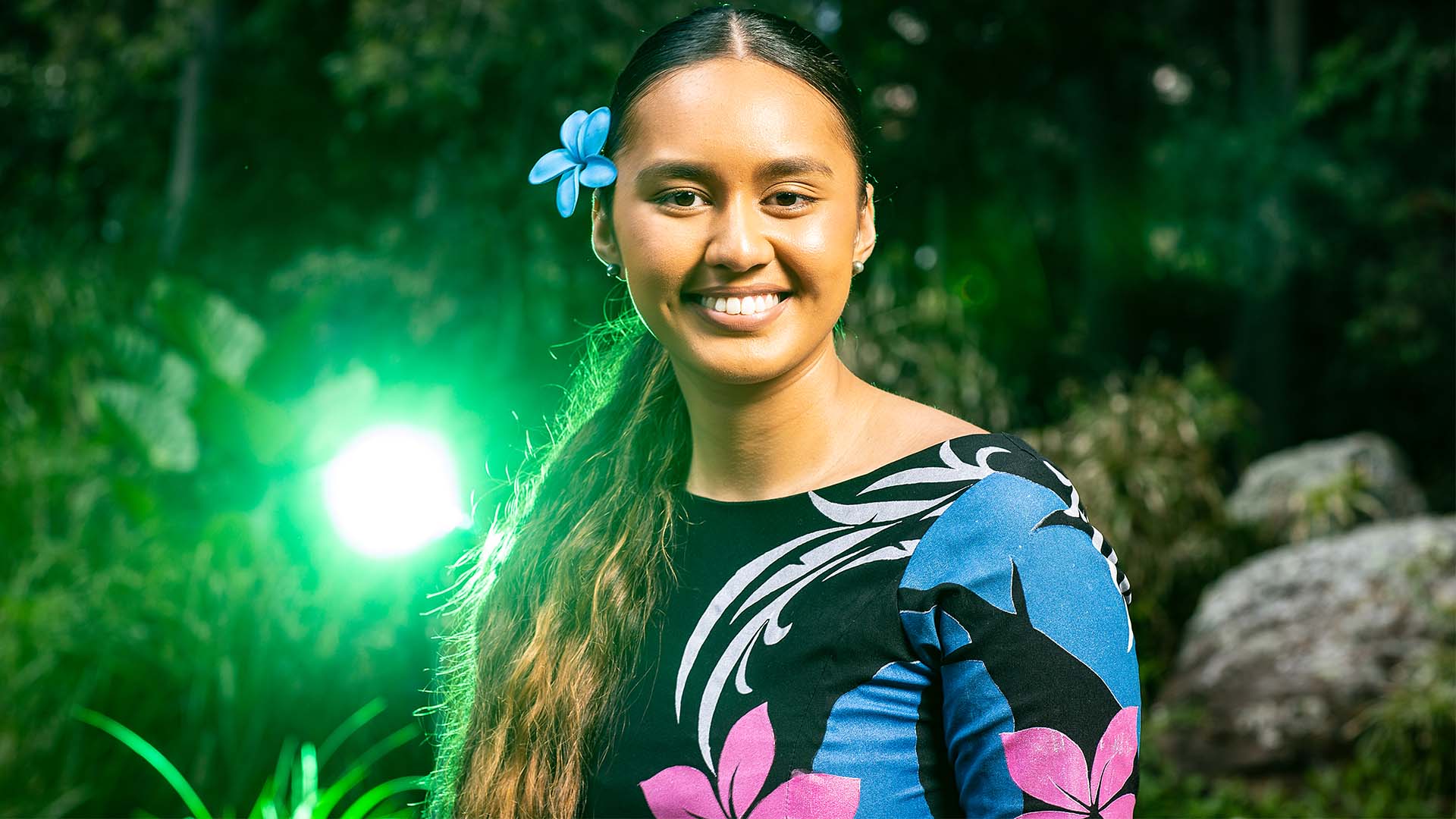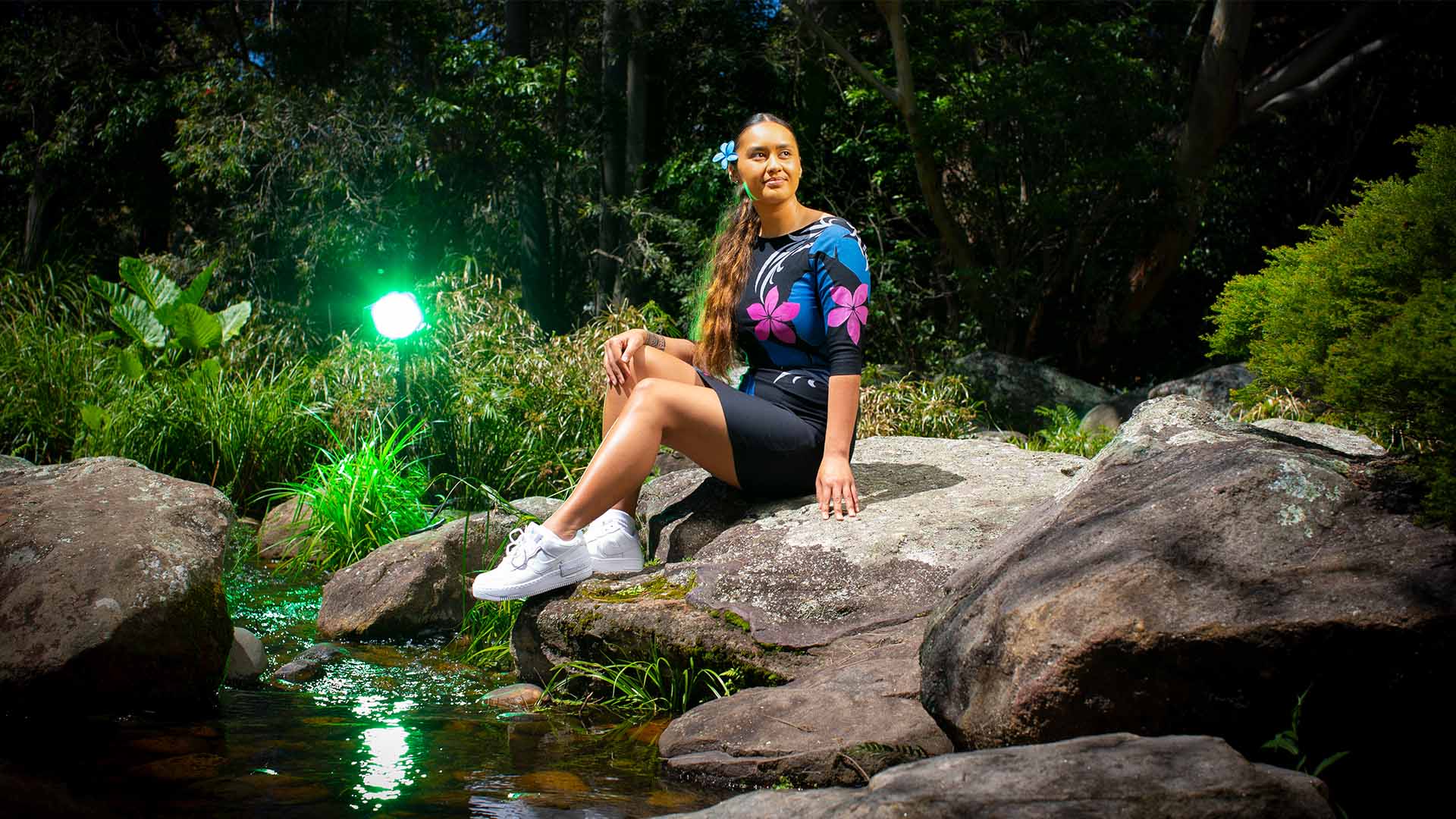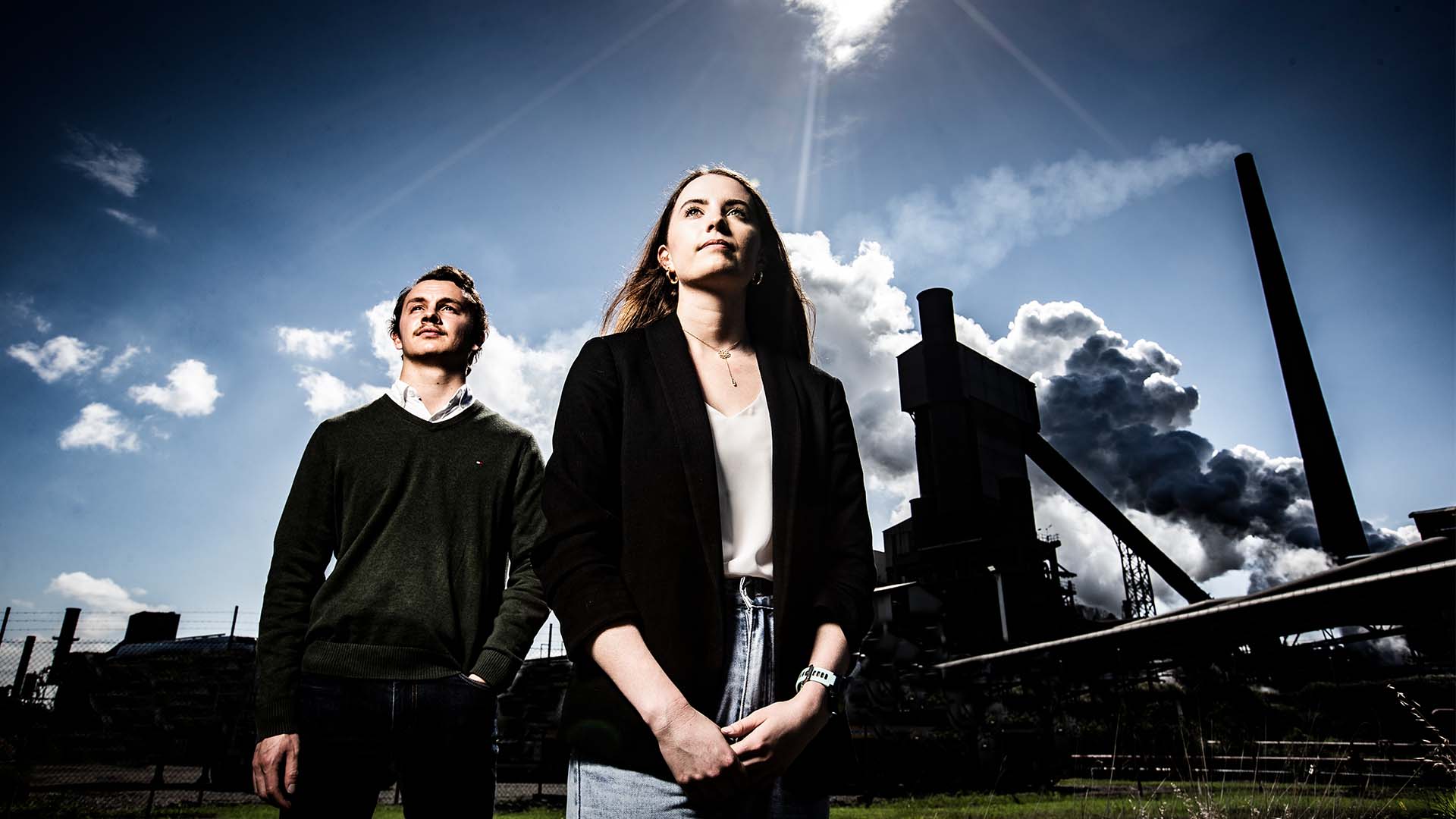Our future in their hands
UOW climate warriors fight for a healthier planet
October 28, 2021
They’re in their early twenties, fresh-faced but also fiercely committed and hopeful that together, they can change the future of our climate
Back to Indigenous knowledges
And there she stands in front of the United Nations audience, her long, dark hair in a neat plait and her hazel-brown eyes full of quiet determination, to greet the global world leaders and climate activists. They have all come to the 26th UN Climate Change Conference of the Parties (COP26) in Glasgow to discuss and agree on urgent action to tackle the climate crisis.
“My name is Moemoana Schwenke. Moemoana means ‘calm ocean’. I'd ask that you picture that as I speak—a calm ocean. I am here, at COP26, for the Pacific Islands, and for Samoa. In these places: the land, the ocean and the people have a heartbeat. They are like my roots that firmly ground my identity,” Moemoana begins her speech.
“Yet this calm ocean is now angry. It is violent, washing over lands that carry culture, washing over my ancestors' burial grounds with the chance and fear of my people becoming climate refugees," her voice pierces the silence.

Born in Samoa and raised in New Zealand and Australia, Moemoana Schwenke is only 21 years old. At UOW, she pursues a double degree in Indigenous Studies and Environmental Humanities alongside Communications and Media.
She may be only 21, but since she was 14, she has been a fierce climate warrior, seeing how her beloved island of Samoa has suffered from the immediate effects of climate change. Many Pacific Island nations have seen accelerated sea level rises, longer and more intense heatwaves, exacerbated natural disasters like floods and cyclones and progressing coastal erosion. For them, it's not climate change but a climate emergency.
In Glasgow, along with other members of the Pacific Island youth representatives and their organisation, Pacific Climate Warriors, Moemoana will represent Samoa, Tuvalu, Tokelau, Kiribati, Tonga, Fiji, Hawaii and 20,000 other islands of the Pacific Ocean. Even though they’re the least responsible for the climate crisis, Pacific countries are at the frontline of the impacts of climate change. The ocean – their DNA and the most powerful part of their heritage, livelihood and economy – is also the biggest threat to their existence.
As The Pacific Climate Warriors (acting on behalf of 350.org) write in their statement: "Every morning, we wake up and the ocean is there, surrounding our island. But now, driven by climate change, the ocean is creeping ever closer. Unless something changes, many of our Pacific Islands face losing everything to sea level rise."
Moemoana says that the region has a unique moral authority to act. The Pacific Climate Warriors’ plan for COP26 is very concrete. First, they want to amplify the voices of the frontline Pacific communities, especially the youth. They also call for more Indigenous people to be present at the decision-making tables. They believe that COP26 presents an open arena to talk about funding. One of their pleas is to defund fossil fuels. Another – to fund a smooth transition into climate action by increasing climate finance, especially for many smaller organisations like their own.
"When big corporations, governments and world leaders are not fully committing to reducing fossil fuels and don't want to shift to 100 per cent renewable energy — who can we look to? I believe the most authentic, impactful and empowering climate leadership comes from our Indigenous people of the world," Moemoana explains.
"We know that the solution to this climate crisis lies in the Indigenous knowledges. We have protected these lands for centuries. Now, there is no time to lose. We need to move financial flows away from fossil fuels."
The nations of the Pacific Ocean have always lived close to nature, their culture, politics, economy and everyday rituals closely interwoven with the ways of the land and the ocean. In the Samoan language, some words have a few meanings, giving a glimpse into their rich cultural mythology. For example, the word fanua has two meanings – it is the Samoan word for land, but at the same time, it also describes a woman's placenta. Ele'ele or palapala means blood, yet it is also used to represent earth, dirt or mud. Because for Indigenous peoples of the Pacific, human being is not an individual, but part of the land.

One of the big missions for Moemoana is to disseminate and popularise the Pacific Islands' culture.
"My parents own a cultural centre in Western Sydney. I was active there from a very young age, learning about Pacific cultural arts, and now I teach what I know to the Pacific youth. I am a fire dancer, and this Samoan cultural art is called siva afi. It is performed with a single hook-shaped weapon, nifo oti. So, it was my culture that taught me to be a warrior," Moemona explains proudly.
The Youth Climate Change Project
For many students, the University of Wollongong represents the best of Australia – the sacred landscape extending from the ocean to the escarpment, with a set of ancient Aboriginal influences interconnecting the dots.
“We are fortunate to be living here and experiencing the best that Australian nature has to offer: towering escarpment to the west and pristine ocean to the east. The uniqueness of the Illawarra environment and its part in students' identity speak to the need to preserve it,” says Ben Hamill, psychology student and the chair of the project team that has led the UOW contribution to this year’s Conference of Youth on Climate Change (COY16).
As part of the conference, the young team has consulted with over 2500 people in the community: students, academics and local citizens and policymakers, to develop a Youth Climate Statement (PDF) – a set of climate change commitments of the university, as well as demands on a local, national and global level.
Their five-point manifesto, which was endorsed by 3600 people, commits UOW to carbon neutrality by 2030, with the University’s efforts supervised by Professor Timothy McCarthy, Director of Sustainable Buildings Research Centre, and UOW’s Vice-Chancellor, Professor Patricia M. Davidson. The statement lists changes around sustainable transport to and from the University and effective energy management as some of the most important goals to be achieved.
Commerce student Grace Mahon, 19, has been one of the crucial members of this project. As an Executive Officer for UOW COY16 efforts, she spent countless hours doing research, benchmarking and outreach.
“I am proud to be part of UOW as it’s been the only Australian institution to create such a powerful climate statement for the United Nations,” Grace says.

Throughout Australia and the world, youth activism has been on the rise. For Generation Z, so those born between 1995 and 2009, the environment is a key issue of concern. According to Amnesty International’s survey of more than 10,000 people aged between 18 and 25, Gen Z chose climate change as the most pressing issue of our time, closely followed by pollution and terrorism.
Many of these young adults had started paying attention to climate change in 2018 when 15-year-old Greta Thunberg from Sweden began her protests outside the Swedish Parliament. Her conviction and authenticity had a ripple effect and sparked a global youth climate movement, with teenagers all over the world leaving classrooms and joining climate strikes.
In 2019, Greta was named 2019 Person of the Year by Time magazine (the youngest winner ever). The same year, Australian media showed the crying face of 13-year-old schoolgirl Izzy Raj-Seppings, who protested with her surfer father outside Kirribilli House, the prime minister’s Sydney residence. As the policeman told her she may get arrested, she was in distress but bravely stayed on, adding: “I think my father would have preferred to go surfing.”
Both Ben and Grace are fresh-faced, smart and enthusiastic. They say that their passion for climate action has stemmed from their love for nature, sport and travelling. Grace does triathlon and loves the ocean; Ben spent some time at the Great Barrier Reef when he was 12, which has left him ‘devastated to see the scale of damage’. But they’re certainly not naïve. For them, climate action is multi-faceted and requires a mix of strikes and protests with an informed action – putting pressure on politicians, being mindful of where your money goes and living sustainably.

“When commuting, I make a concerted effort to catch public transport or to utilise active transport, and I feel that it is a relatively easy and achievable thing all of us can do. I've become mindful of my diet, reducing the amount of meat I eat,” Ben explains.
“I’ve also made sure that the energy I receive comes from renewable sources, which on top of being sustainable, is also cost-effective. Even though it’s ultimately about institutional change, there’s plenty of small, smart things that we can do as individuals to bring about a change in perspective.”
Grace feels similar – she’s trying to travel and shop sustainably, even though she admits that sometimes it may be hard to do when you’re on a student budget.
“It can sometimes feel like not much, but our voices really can make a huge difference and lead to a renewed commitment for a healthier planet. The most important thing we can do as young people is to put pressure on companies by voting with our money. I try to be financially smart and invest in institutions that have a positive social impact,” she says.

Even though both are adamant that the road to reducing emissions in Australia will be rocky, Ben and Grace stay optimistic.
“I'm hopeful for the future, given the real passion that I see in people younger than myself. It’s the tipping point for concrete action. The governments cannot ignore us now,” Ben says.
“The one thing that I find quite concerning is that the average age of people in power is around 50. Young people can be powerful, but we need time to work up into the positions of influence. Fortunately, we can vote – so there’s going to be more pressure on politicians to reduce emissions and lead more sustainably,” Grace adds.
UOW Youth 5-Point Climate Statement
- Work towards carbon neutrality by 2030.
- Improve energy management and have a renewable power purchasing agreement by 2025.
- Support sustainable transport strategies.
- Cultivate research excellence in climate change solutions.
- Educate the community about climate change.